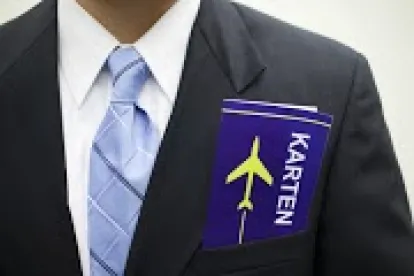On January 17, 2017, a new Department of Homeland Security rule took effect. “Retention of EB-1, EB-2, and EB-3 Immigrant Workers and Program Improvements Affecting High-Skilled Nonimmigrant Workers” is intended to benefit U.S. employers and affected workers by streamlining sponsorship processes and increasing job “portability” for workers. The new rule affects foreign national workers who are waiting in line to receive their lawful permanent resident (“green card”) status and impacts certain employees with temporary status, including H-1B, TN and E visa holders.
Background
Unless an employee is eligible for green card status in another category (e.g., multinational manager/executive) the employment-based green card process generally follows three steps: (1) an employer conducts recruitment to test the U.S. labor market for the position that is being offered to the foreign national and files the results (“Labor Certification”) with the U.S. Department of Labor; (2) if no U.S. worker is qualified, willing or available to fill the position, the employer files an Immigrant Visa (“IV”) Petition with the U.S. Citizenship and Immigration Services to reserve the foreign national a spot in line for a green card (the “Priority Date,” established by the date of filing with the Department of Labor); and (3) when the foreign national’s spot in line comes up, he or she applies for lawful permanent residence. The worker’s spot in line is determined by his or her country of nationality and the type of job to be filled. If the position requires an advanced degree, the foreign national is given employment-based second preference standing (“EB-2”); if the position requires a bachelor’s degree or entails other skilled labor, the position is given employment-based third preference (“EB-3”). First preference (“EB-1”) positions are reserved for multinational managerial executives, outstanding professors and researchers, or individuals considered to have extraordinary ability in their field. EB-1 positions do not require a test of the U.S. labor market.
For individuals from certain countries, particularly China and India, the wait can be very long (several years) before they are eligible to apply for lawful permanent residence. This new rule aims to alleviate some of the pressures created by these long waits by making it easier for individuals in the EB-1, EB-2 and EB-3 lines to change jobs.
Many of the individuals waiting for green cards are currently present in the United States pursuant to H-1B visas. An H-1B visa is a temporary nonimmigrant visa that allows the worker to hold a specific job with a specific employer. The job must be a “specialty occupation”; that is, it must require at least a bachelor’s degree in a specific field of study. There are a limited number of H-1B visas available each year, and there are many times more applied for than are issued; demand far exceeds supply. However, there are exemptions from the quota for certain educational and nonprofit entities. Further, H-1B visas are valid for only two three-year increments (six years in total) before the employee must leave the United States. This time limit is often insufficient given the long wait times for green cards. The new rule builds upon previous regulations to provide relief in these instances.
Summary of Major Provisions and Impacts
The new rule makes numerous procedural and substantive changes to the federal regulations. A full copy of the rule can be found at 81 Fed. Reg. 223 82398 (Nov. 18, 2016). Following are the most important changes that affect the employers of EB-1, EB-2, EB-3 and certain other nonimmigrant temporary visa workers.
-
Workers who are currently in line for an EB-1, EB-2 or EB-3 green card are allowed to retain their Priority Date if they file for a subsequent EB-1, EB-2 or EB-3 petition with a different employer. Thus, the applicants will not lose their place in line if they switch to another qualifying job.
-
Workers with employment-based IV petitions that have been approved for more than 180 days (without obtaining a green card) will no longer have their petitions revoked based only on withdrawal by the petitioner. Previously, an employer that went out of business or terminated an employee for whom it had obtained an employment-based IV petition would file a revocation of that petition, resulting in the employee losing his or her place in the green card line. With this new rule, workers will be able to retain their place in line if and when a new employer files an employment-based IV petition.
-
Rules were codified regarding potential extensions beyond the usual six-year limit for H-1B visa holders with approved or in-process IV petitions that are waiting in a long line for their green cards. Thus, workers with approved EB-1, EB-2 or EB-3 petitions may be able to receive extensions in three-year increments, while individuals for whom a Labor Certification or IV petition has merely been filed and pending for 365 days may receive H-1B extensions in one-year increments. The employer requesting the extension need not be the same employer as the filer of the IV petition.
-
Individuals who hold E, H-1B, H-1B1, L-1, O-1 or TN visas will receive a 60-day grace period if their employment ends is ended during the validity period of their status. These workers will now have 60 days to leave the United States or obtain another valid status following the end of their employment, during which they will not accrue unlawful presence.
-
For H-1B professions that require a worker to have a state or local license to engage in the occupation, the H-1B visa may be granted for up to one year if the appropriate licensing authority will not grant a license due solely to the employee’s lack of a valid Social Security number or employment authorization. Thus, these H-1B visa holders may be granted status and be allowed to work for the employer while waiting to obtain the required license.
-
The new rule authorizes automatic extension of a worker's Employment Authorization Document (“EAD”) for up to 180 days upon filing of an extension application prior to the expiration of the current EAD. The extension must be based on the existing authorization category and cannot require adjudication of another application. Eligible categories include individuals with pending Adjustment of Status (I-485) applications, refugees, asylees, Temporary Protected Status recipients and individuals with pending I-485 applications. Ineligible categories include H-4 and L-2 beneficiaries.
-
The definitions of “institution of higher education” and “related or affiliated nonprofit entity” are codified and clarified to provide better guidance to entities that could qualify for the H-1B quota exemptions.
Thus, the new regulations allow mobility in the labor market for those seeking green cards or currently in the green card process and provide relief to those hindered by the time pressures of long waits. Employees can more freely move between employers, so employers can recruit and retain employees more easily under the new rules.



 />i
/>i

